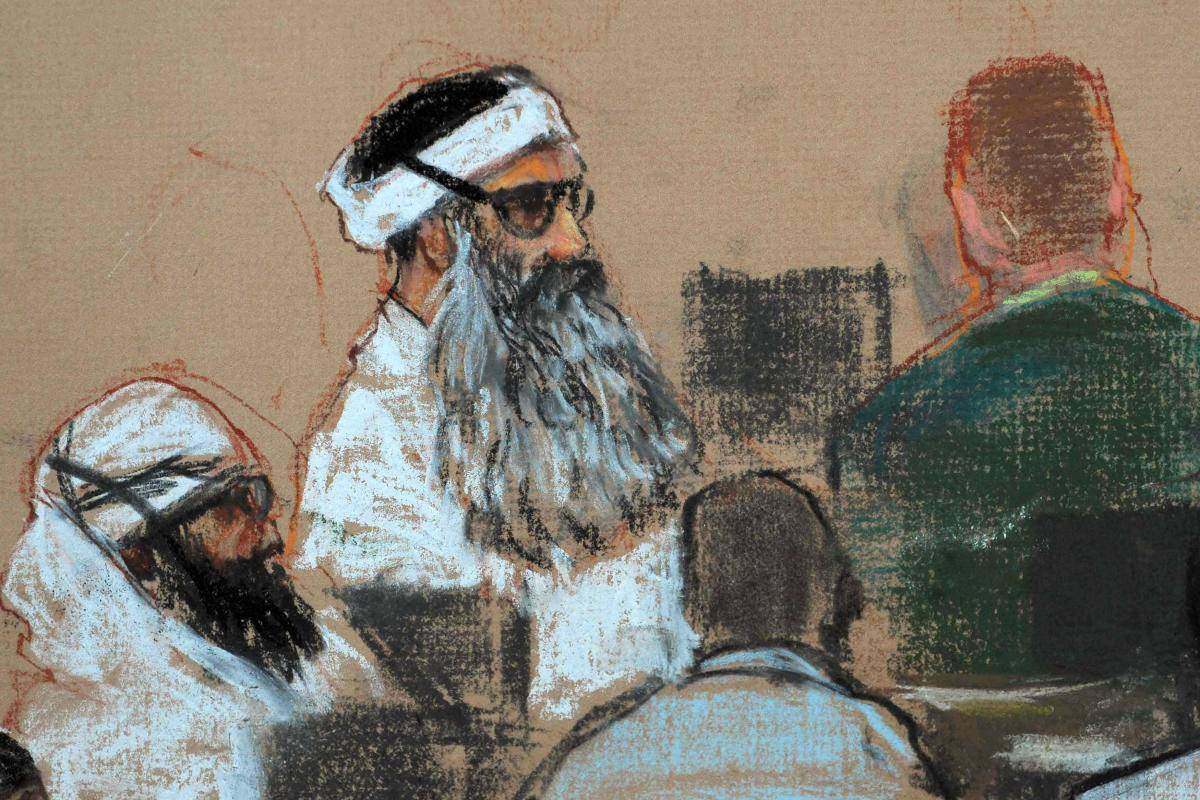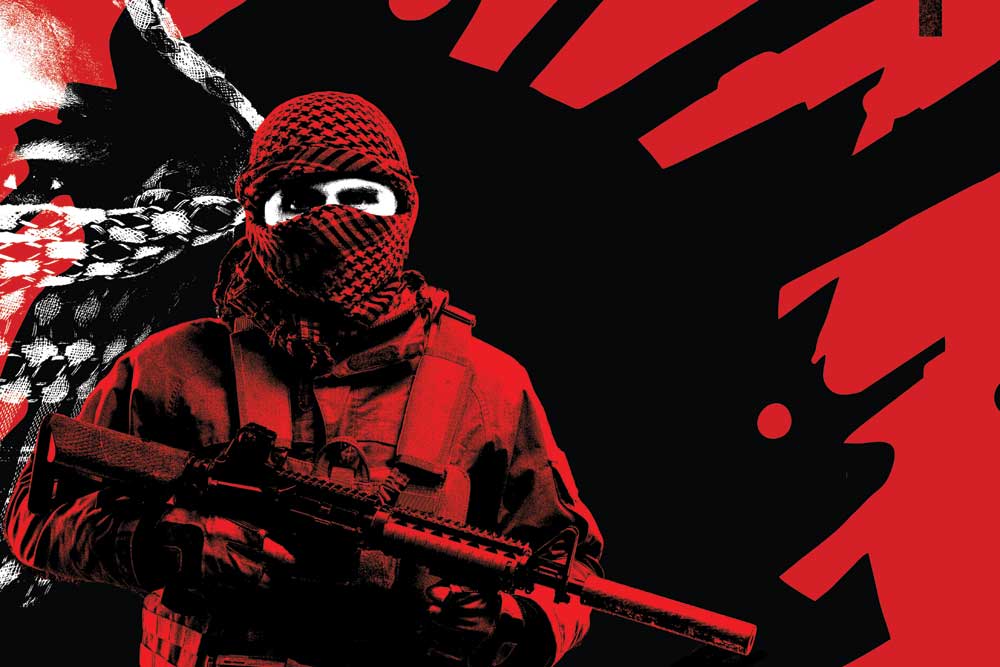More Coverage
Twitter Coverage
Satyaagrah
Written on
Satyaagrah
Written on
Satyaagrah
Written on
Satyaagrah
Written on
Satyaagrah
Written on
JOIN SATYAAGRAH SOCIAL MEDIA
The Islamic Doctrine of Permanent War: Jihãd and Religious Riot

Jihãd is one of the basic doctrines of Islam, but the average Indian's knowledge of it is both superficial and unsatisfactory. Hindus usually render the term as dharmayuddha, but this rendering is totally misleading. Dharmayuddha means "war fought according to rules laid down in the Dharmashãstras" such as not attacking a person who does not have a weapon or has dropped it, not molesting an adversary who has surrendered, not pursuing a defeated enemy who has run away, not attacking the non-combatants in the enemy camp, not harming the women and holy people and places in the enemy's territory, etc.
Hindus have never known the concept of a religious or holy war, a concept which is characteristic of the monotheistic creeds. Therefore, to the common Hindu, in particular to those who are ignorant of the history of the many religious wars waged by monotheistic creeds of Asia and Europe, jihãd is a lofty conception. It is nothing less than war aimed at establishing what they consider righteousness in the world.
Very few Hindus care to remember that the boy-emperor Akbar had become a ghãzî by slaughtering his helpless and fatally wounded prisoner Himu at the bidding of Bairam Khan in 1556 AD. Actually, even those Hindus who remember the story do not know that the title ghãzî is conferred only on victorious, kãfir - slaughtering mujãhids. In truth, jihãd is war for the destruction of infidels (kãfirs) and infidelity (kufr).
 |
To obviate prevailing misconception, it is important to explain the meaning of jihãd from the Koran, the Hadis and the corpus of theological works collectively going by the name of Shariat. As jihãd is a basic doctrine of Islam and as its focus is on the infidel, it is not fit that Hindus should go on cherishing their deep-seated delusion regarding its meaning.
For the matter of that, even the average Muslim's knowledge of this doctrine is superficial. Every Islamic tenet is spread over the 6,000 and odd verses of the Koran in a desultory, haphazard manner. Few Muslims are competent enough to assemble the relevant verses enjoining jihãd in order to get a systematic, coherent meaning. Such a work of systematisation as the present one professes to be, could therefore be useful to Hindus and Muslims alike.
There is another, a more compelling, reason for present-day Indians to have a clear understanding of the doctrine of jihãd. The so-called communal conflict in India which from day to day has been gaining in intensity has clear overtones of an all-out jihãd that could burst upon us at any moment. This is not to deny that with the average Muslim the desire for peace and communal harmony is as strong as with most Hindus. But the common Muslim is mostly ignorant regarding how to channel his desire for peace without controverting the basic tenets of Islam. In the epilogue to this book, an attempt has been made in that direction. But it is not possible to take a stand against jihãd without a clear knowledge of its meaning and its many-sided implications. This book is primarily a search for this meaning, and in this search our only guides are the Koran, the Hadis and the Shariat.
Jihãd has five clear components, and a complete understanding of the subject requires a discussion of each one of them. Thus jihãd stands for (1) Forcible expansion of Islam; (2) Destruction of infidels; (3) Establishment of jizyah on the subdued infidel population; (4) Plunder in the form of properties wrested from infidels; and (5) Plunder in the form of enslaved female and child population acquired from the vanquished infidels.
An important question relating to the subject of jihãd is this: in mixed populations consisting of Muslims and non-Muslims alike, should this sanguinary creed not inevitably lead to religious riots?
Certainly, the Koran furnishes us with verses which have the appearance of extremely provocative utterances aimed at rousing the Mussalmans to a state of murderous mob-fury. ‘Go forth light-armed and heavy-armed and strive with your wealth and your lives in the way of Allah’, says the Koran (9/41). A verse of this kind does look like being more in the nature of a rabble-rousing ejaculation than a proclamation of preplanned and premeditated warfare. ‘Slay the idolaters wherever you find them’ (9/5) is again, to all appearances, a call to lawless violence rather than a general’s directive to draw the battle lines with discipline and forethought.
 |
Indeed, the whole group of the so-called Immunity Verses (9/1-12) of the Koran seems for all practical purposes to indicate a sort of abdication of the Islamic state’s responsibility for law and order by asking the Muslim masses to destroy the infidel population by whatever means available to them. A close examination of the context and consequences of the verses is, therefore, necessary to investigate the question of the relation of the doctrine of jihãd to religious riot.
As has been mentioned earlier, the Immunity Verses of Sûrah Taubah were issued in early 631 CE to inform the idolaters of Arabia that after the expiry of 4 months their religion would no longer be tolerated. As Mohammed Pickthall, the orthodox translator of the Koran, mentions in the introduction to this sûrah, these verses formed the ‘proclamation of Immunity from obligation toward the idolaters’ and ‘signified the end of idolatry in Arabia’. But how was that end to be achieved?
By ‘slaying the idolaters’ indiscriminately, says the Koran; by ‘besieging them’ and by ‘laying for each of them an ambush’. In other words, Allah does appear to have sanctioned, by these verses, religious riots on an unprecedented scale.
But did the Prophet so interpret them? The biographies do not narrate any large-scale riot following upon the issuance of these verses. It has to be remembered that the Prophet survived these injunctions by only about a year, and most of the time he was receiving delegations from the tribes of Arabia offering voluntary submission and voluntary adhesion to his creed.
Information regarding forcible conversions during the period is scanty; and apart from the riot-mongering verses of the Koran mentioned above, we are not informed of any specific instance of religious riot actually taking place in pursuance of them. In the technical language of Islam, we should say that the riot-mongering verses did not give rise to a body of Sunnah to illustrate them.
But indeed such Sunnah is not necessary. The Islamic concepts of Dãr-ul-Islam (territory of Islam) and Dãr-ul-harb (territory of war), which originated from the jihadic provisions of the Koran and the Hadis, seem to have grown out of this very dilemma. These concepts presuppose the extermination of Arabian idolaters by the power of the state, while in non-Arab Islamic states the practice is to spare the lives of idolaters on payment of the poll-tax.
Such an arrangement dispenses with the need for religious riots in Islamic states for the simple reason that the state on its own does the work of conversion or refrains from it according to its own convenience. In these states, the populace is absolved from its duty of ‘slaying the infidels’ indiscriminately.
By the same token, non-Islamic states with a large body of Muslim population must of necessity give rise to religious riots, if the Ulema declare these states to be Dãr-ul-harb. The Immunity Verses of the Koran must, in the nature of things, come into full play in such states. In this restricted sense at least, jihãd and religious riot are one.
 |
Who would give the call for such riots? It has been shown in the previous chapter that jihãd cannot start without the Imam pronouncing a call for it. It has also been pointed out that in Islamic states, the king is the person best qualified to pronounce such a call. But in Dãr-ul-harb such an Imam is obviously not available. So any person with the requisite Islamic qualifications can give the call for jihãd, and even the Imam who leads the congregation in Friday prayers can very well undertake the job. Needless to say, such a jihãd can hardly turn out to be anything but a species of religious riot.
To illustrate such jihãds, which should more properly be called jihãd-riots as distinct from a full-fledged jihãd, I should give some examples from India’s recent history. In such a case, historical examples of lesser Imams must replace the Prophet’s Sunnah if only because the Prophet’s career antedated the doctrine of Dãr-ul-harb.
- The first considerable religious riot in India under British rule was the so-called Mopla rebellion of 1921 which occurred in Malabar as an offshoot of the Khilafat Movement. The Moplas burst into unprecedented violence against the British, following upon the Khilafat Committee’s call for the same addressed to the believing population of Malabar. As it turned out, most of the casualties in this jihãd were Hindus rather than the British. Hundreds of Hindu women jumped into wells to save their honour, others being ravished and slaughtered with absolute indifference by blood-thirsty mujãhids. Hundreds of corpses of Hindu women as well as children were recovered from the wells after the end of the riots. The call for this jihãd had been pronounced by the Ali Brothers, Hasrat Mohani, and Maulana Abul Kalam Azad. Mahatma Gandhi himself acknowledged these atrocities as part of Islam’s holy war. He referred to the mujãhids as ‘God-fearing Moplas’ and said: “They were fighting for what they consider as religion and in a manner which they consider as religious.” Needless to say, such a manner of fighting for such a cause is the essence of an Islamic jihãd. It should be mentioned that leaders like Azad gave the call for jihãd against the British rather than the Hindus, but it is not known how they intended to confine the war against a single class of infidels.
- The Great Calcutta Killing of 1946 was again the consequence of a call for jihãd, which in this case was pronounced by Mohammed Usman, the Mayor of Calcutta at that time. He put the call in black and white and addressed the mujãhids as follows:
“It was in this month of Ramzan that open war between Mussalmans and Kafirs started in full swing. It was in this month that we entered victorious into Mecca and wiped out the idolaters. By Allah’s will, the All India Muslim League has selected the selfsame month of Ramzan to start its jihãd for realising Pakistan.”
- The holocaust in Noakhali in the same year (1946) was likewise intended as a full-fledged jihãd. The call, in this case, was pronounced by Gholam Sarwar, a Muslim M.L.A. from those parts. Gholam Sarwar’s call was not documented, but the report submitted by Judge Simpson clearly refers to:
“large-scale conversion of Hindus to Islam by application of force in village after village. In many instances, upon the refusal of the menfolk to embrace Islam, their women were kept confined and converted under duress.”
All these, of course, were characteristic of a true jihãd.
This was not all. As in Calcutta, the Noakhali riots were characterised by the dishonouring of thousands of Hindu women. There were clear indications that these unfortunate women were looked upon as the mujãhids’ lawful plunder (ghanîmah). Baboo Rajendralal Roy, the President of Noakhali Bar Association, attempted to put up on his own some resistance to this jihãd. The outcome of this resistance has been described by a contemporary writer:
“Rajenbaboo’s head was presented to Gholam Sarwar on a platter, and two of his lieutenants received as guerdon both of his young daughters (in their harem).”
- The large-scale communal riots taking place in places like Aligarh, Bulandshahar and the like in December 1990, were all the handiwork of worshippers proceeding from mosques at the end of the Friday prayers. Most newspapers reported these riots, but none quoted the call given by the Imams.
- Almost all Hindus have in recent years been evicted from the Kashmir Valley as a result of jihãd. This particular jihãd has been authorised and financed by Pakistan and other Islamic countries. Clinton’s America is the latest addition to the names of countries actively promoting this jihãd. Of course, America has not called it a jihãd but declared its support of the mujãhids in the name of Human Rights, which means the same.
- The large-scale arson of December 1992 occurring in Islamic Bangladesh in the wake of the demolition of the Babri structure at Ayodhya was characterised by gangrapes of thousands of Hindu girls, assaults on Hindu temples, and widespread loot and violence. It had all the marks of a full-fledged jihãd.
 |
All these examples go to show that riots on many occasions break out in the name of jihãd. I have mentioned Indian examples alone, but similar examples can no doubt be cited from most countries with a substantial Muslim population. It is a moot point whether such jihãd-riots satisfy all the scriptural requirements of an unadulterated Jihãd fi Sabilillah (jihãd in the way of Allah). But there is little doubt that jihãd-riots do take place.
If a country with a sizeable Muslim population neglects the possibility of their incidence, it does so at its own peril. In India, for example, the ever-increasing uncertainty in Hindu-Muslim relations can be set down to our long-standing failure in taking a clear stand on the subject of riots inspired by the psychology of jihãd endemic in the Muslim community. Before taking up this topic, I should give a summary of the discussion spread out in the foregoing chapters.
References:
voiceofdharma.org - Suhas Majumdar
Translated from the Bengali original cited in R.C. Majumdar, Bãñglãdesher Itihãsa, Volume IV.
Ibid
Benoy Bhushan Ghosh, Dvijãtitattva O Bãñgãli, p. 68.
mutualart.com - Turay Médéric
 Support Us
Support Us
Satyagraha was born from the heart of our land, with an undying aim to unveil the true essence of Bharat. It seeks to illuminate the hidden tales of our valiant freedom fighters and the rich chronicles that haven't yet sung their complete melody in the mainstream.
While platforms like NDTV and 'The Wire' effortlessly garner funds under the banner of safeguarding democracy, we at Satyagraha walk a different path. Our strength and resonance come from you. In this journey to weave a stronger Bharat, every little contribution amplifies our voice. Let's come together, contribute as you can, and champion the true spirit of our nation.
 |  |  |
| ICICI Bank of Satyaagrah | Razorpay Bank of Satyaagrah | PayPal Bank of Satyaagrah - For International Payments |
If all above doesn't work, then try the LINK below:
Please share the article on other platforms
DISCLAIMER: The author is solely responsible for the views expressed in this article. The author carries the responsibility for citing and/or licensing of images utilized within the text. The website also frequently uses non-commercial images for representational purposes only in line with the article. We are not responsible for the authenticity of such images. If some images have a copyright issue, we request the person/entity to contact us at This email address is being protected from spambots. You need JavaScript enabled to view it. and we will take the necessary actions to resolve the issue.
Related Articles
- Moplah Genocide of the Malabar Hindus, 1921: Thousands of Hindus slaughtered
- Why Hindu-Sikh genocide of Mirpur in 1947 ignored? Why inhuman crimes of Radical Islamists always hidden in India?
- Prophecies of Jogendra Nath Mandal getting real after seventy years of his return from Pakistan
- Supreme Court dismisses plea seeking protection of Hindus from the Muslim community in Mewat
- Dhimmitude is nothing but a Stockholm Syndrome
- Violence Against Minority Hindus in Bangladesh: The Mistier World Of Silence
- Calcutta Quran Petition: A petition to ban the Quran altogether was filed 36 years ago, even before Waseem Rizvi petitioned for removing 26 verses from Quran
- Speech of Sardar Patel at Calcutta Maidan in 1948 busts the myth of ‘Muslims chose India’ and is relevant even today
- On 16th Aug 1946, during Ramzan's 18th day, Direct Action Day aimed to provoke Muslims by mirroring Prophet Muhammad's victory at Badr, Gopal 'Patha', the Lion of Bengal, heroically saved Bengali Hindus & Calcutta from a planned genocide, altering history
- Twitter rewards an Islamist org, set to be banned by India, with a verified blue tick: Here is what PFI has done in the past
- What is the reality of the Sufis: In Their Own Words
- Here is a list of 20 incidents where the ‘Jai Shri Ram’ slogan has been misused to turn a random crime into ‘hate crime’
- Haunting history- 50 years of Operation Searchlight in Dhaka
- The ‘Sanghi propaganda’ trope on abduction and conversion of Sikh girls to Islam. Here is how this online tirade is an omen of impending danger
- Wikipedia dismisses Love Jihad as a conspiracy theory by Hindus, but claims reverse Love Jihad against Muslims is real




























